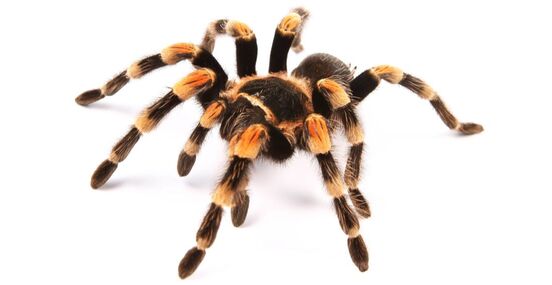How old should my Tarantula be before feeding it mice?
Not all Tarantulas can be fed mice as some are simply to small even when fully grown. If your species is one of the ones that can eat mice, it should be fully grown or close to it before being fed any kind of whole prey. Most arachnids eat nothing larger than what are called pinky mice or new born mice that are only a few days old. However some larger arachnid species can eat adult mice such as the Goliath Bird Eater.
How often should I feed my Tarantula mice?
You should feed your Tarantula whole prey as a treat but not as a permanent diet. Arachnids naturally eat insects in the wild as well as larger prey. The calcium build up from eating to many adult mice can have a negative affect on your arachnid if done to often. However if you feed your arachnid after a molting it can help relieve stress and increase the overall health.
Do mice have too much calcium?
Too much calcium for arachnids is for all scientific reasons is a myth. However the best way to avoid this problem all together is to simply feed your spider pinky mice when feeding whole prey. Mice pinkies are too young to have any calcium build up and haven't developed a proper skeletal system yet thus are perfectly fine for your arachnid. Larger mice do however have a higher percentage of calcium in their bodies as the cartilage in their bodies becomes calcified with age.
Feeding live vs frozen rodents?
This goes for all exotic pets such as snakes, lizards, monitors and not just arachnids. Feeding live rodents to captive bred exotic pets who haven't gained the same instincts that they normally would in the wild is a recipe for disaster. Live rodents can be very aggressive when cornered and can easily injure and some times fatally harm an exotic animal in captivity. Live rodents can also carry disease that frozen rodents wouldn't normally have since the temperature helps to pause or prevent growth of any pathogens or harmful diseases. Make sure to thaw out your frozen rodents in a bucket of luke - warm water for 15 minutes and not in the microwave unless you want a mess in your microwave.
How to thaw frozen feeders?
DO NOT use a microwave to thaw out your frozen rodents as it can cause harmful bacteria to start growing inside them which can be detrimental to your bearded dragons health! Cooking your rodent in the microwave can also take away from the nutritional value of the rodent itself.
Step 1
Find a ziplock bag.
Step 2
Place feeder inside bag and seal it shut.
Step 3
Place bag in a bucket of warm water, make sure it's NOT boiling hot.
Step 4
Leave bag in bucket for about 10 - 15 minutes or until the rodent feels squishy.
step 5
Make sure the rodent isn't cold to the touch as digesting cold feeders can be very harmful to your cold blooded reptile that can't regulate its own body temperature like we can.
Step 6
Grab a pair of tongs and swing the meal back in forth in front of the bearded dragon in order to get its attention. No need to cut up the mice into smaller pieces as the lizards are completely fine eating pinky mice whole.
Step 1
Find a ziplock bag.
Step 2
Place feeder inside bag and seal it shut.
Step 3
Place bag in a bucket of warm water, make sure it's NOT boiling hot.
Step 4
Leave bag in bucket for about 10 - 15 minutes or until the rodent feels squishy.
step 5
Make sure the rodent isn't cold to the touch as digesting cold feeders can be very harmful to your cold blooded reptile that can't regulate its own body temperature like we can.
Step 6
Grab a pair of tongs and swing the meal back in forth in front of the bearded dragon in order to get its attention. No need to cut up the mice into smaller pieces as the lizards are completely fine eating pinky mice whole.

